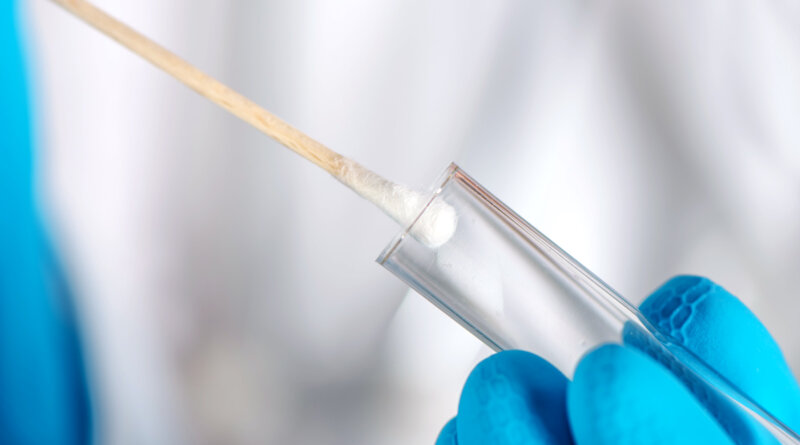COVID-19 Testing Drops, Still Essential, Experts Say
[ad_1]
March 5, 2021 — A recent decrease in the number of Americans seeking testing for COVID-19 has experts on alert. Accurate and timely testing remains critical for treating and isolating individuals with COVID-19 infection, they stress. Widespread testing also allows for tracking the spread of the virus and any variants of concern as they arise.
“Even though it feels like maybe things are slowing down a bit with this pandemic, it still is really important to go in and be tested,” especially for people who have symptoms consistent with COVID-19, Romney M. Humphries, PhD, said during a media briefing Thursday sponsored by the Infectious Diseases Society of America (IDSA).
“If we don’t test, we don’t know how much infection is there,” Humphries added.
Although infection rates are much lower than a few months ago, “they are still high,” Mary K Hayden, MD, said during the briefing.
Rates remain higher in some areas than they were during summer 2020, said Hayden, IDSA fellow, chief of the Division of Infectious Diseases, and director of the Division of Clinical Microbiology at Rush University Medical Center in Chicago.
“So we’re still seeing a good amount of infection,” Hayden said. “I don’t think we’re at a place yet where we can really relax our overall strategies and reduce testing.”
Testing Taking Back Seat to Vaccination?
Although getting more Americans vaccinated is good news, COVID-19 vaccinations could be taking attention and limited resources away from COVID-19 testing. “While the public may view vaccination as a priority right now, and it is a priority, widespread testing still is essential for infection control,” said Humphries, IDSA member and medical director of the Clinical Microbiology Laboratory at Vanderbilt University Medical Center in Nashville.
Vaccination is supplanting testing in some public health jurisdictions, and is partially responsible for the recent decrease in testing numbers. “Public health authorities may not have the bandwidth to both do widespread testing and to do vaccinations so they’re focusing right now on vaccination,” said Hayden.
In addition, fatigue among Americans experiencing a pandemic for more than a year could dissuade some individuals from coming in for testing. “I think a lot of people are just kind of done with the pandemic,” Hayden said.
Initially, many asymptomatic people or those with mild symptoms sought testing for peace of mind. Although it’s anecdotal, “it seems now we’re seeing less of that,” Hayden said.
Why Testing Remains Essential
With the drop in testing numbers, “are we truly seeing a reduction in cases?” Humphries asked.
Testing will help public health officials track variants of interest and variants of concern, as well as gauge the success of vaccination and protection from prior infection, she added.
The message remains that people with symptoms consistent with COVID-19 should seek testing. On an individual level, an accurate and prompt diagnosis can promote appropriate treatment and help protect close contacts.
On a societal level, testing is the most accurate way to determine how much coronavirus is circulating in a given community, to adjust quarantine requirements and to get resources to areas with an outbreak.
In addition, Hayden said, someone who tests positive might be part of an important chain of transmission. In this case, public health department officials can initiate contact tracing to curb further transmission.
“Beyond diagnosis, testing is an important tool to help us enroll people in therapeutic clinical trials,” Humphries said.
A continued emphasis on COVID-19 could also help answer remaining questions: How many people previously infected with COVID-19 are subsequently testing positive? And if they are, is the new infection the same or a variant?
At-Home Testing: Convenience with Caveats
A number of at-home tests for coronavirus infection available under FDA emergency use authorization could help expand testing numbers. A variety of available testing methods will help “really get a lot of testing done,” Hayden said.
Even though some data suggest point-of-care testing is “is not as sensitive as some of the in-lab tests that we can do, but again there may be other advantages that outweigh those,” she added. Greater convenience and testing of people who otherwise might not go to a public testing site are examples.
Unlike federal and state testing sites that routinely report positive test numbers, some at-home tests report findings through a smartphone app, while others do not. Therefore, some positive cases detected at home could remain uncounted, a concern that could grow with increasing use of at-home tests.
“We want to be able to address the results of that test,” Hayden said. Linking at-home test results to a health care provider could promote counseling of people based on their results.
At-home testing also could preclude genomic sequencing of samples to detect and track virus variants. Commercial and state laboratories often have sufficient sample remaining after testing to further test for variants of interest.
“The reality is that getting those samples from people who tested positive at home is pretty improbable,” Humphries said.
On the plus side, Hayden pointed out that although sequencing of samples for variants remains important, every sample doesn’t have to be sequenced to track the spread of new variants.
The Cost of Convenience?
Out-of-pocket costs of $25 or more for at-home tests could be a barrier for some people, the experts agreed. “I do think price point is a challenge. Realistically getting that price point down to a very low level is going to be a difficult challenge,” Humphries said.
“The populations that are impacted the most severely by COVID-19 are those that would be least able to afford that kind of price point from at-home testing perspective,” she added.
Even if COVID-19 testing was more widespread and accessible, Humphries said other concerns remain. “One of the challenges that we’re faced with is that there’s been a lot of movement away from some of the really important control strategies that have been used to mitigate this pandemic.” Areas that are opening public spaces to full capacity or eliminating mask mandates, for example, are “creating a sense, I think, for the public that the pandemic is over.
“And by no means is that true,” she added.
[ad_2]
Source link



de Remeron 30 mg sao para tratar a depressiva.
de Remeron no tratamento do transtorno foi estabelecida em estudos controlados 6
1
Definitely believe that which you said. Your favorite reason appeared to be on the internet the easiest thing to be aware of. I say to you, I definitely get irked while people consider worries that they plainly do not know about. You managed to hit the nail upon the top and also defined out the whole thing without having side effect , people could take a signal. Will likely be back to get more. Thanks
This actually answered my drawback, thank you!
Very well written story. It will be helpful to everyone who employess it, including me. Keep up the good work – can’r wait to read more posts.
As a Newbie, I am always exploring online for articles that can benefit me. Thank you
The next time I read a blog, I hope that it doesnt disappoint me as much as this one. I mean, I know it was my choice to read, but I actually thought youd have something interesting to say. All I hear is a bunch of whining about something that you could fix if you werent too busy looking for attention.
one win [url=https://1win6002.ru]https://1win6002.ru[/url] .